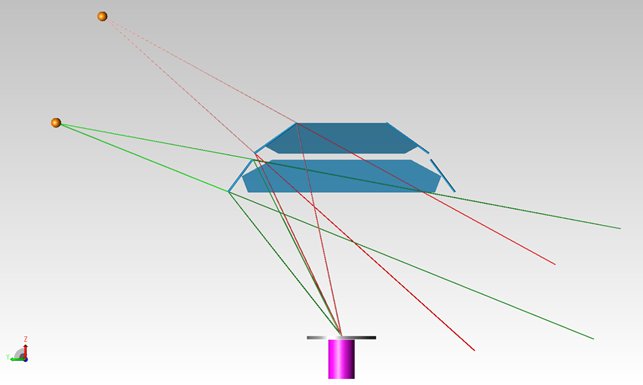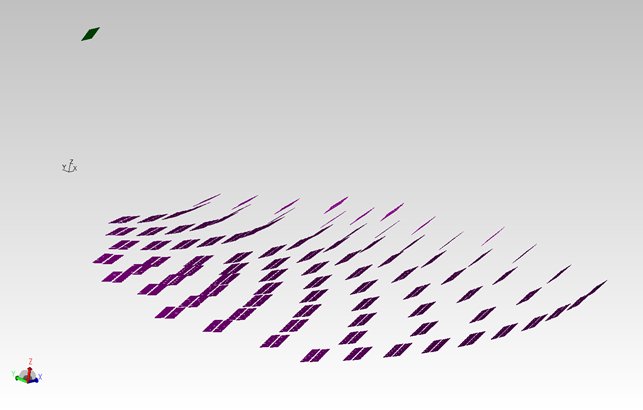Optical design of solar fields
Short description
Optical design of solar fields is performed using general optical software packages and specifically developed codes. The design concerns the heliostats position, the central tower characteristics, the possible secondary optics and the receiver. Very important data can be obtained by simulation, for example the evaluation of the power collected by the solar field at different day/time and the flux distribution on the receiver.
Main technical features
The design phase is performed by means of Lambda Research TracePro, Zemax EE and MatLab routines. The solar radiation is simulated as a beam light with established divergence, that takes into account the alignment errors and mechanical tolerances too. The heliostat field is inserted in the simulation software by means of a suitable macro; beside position and size of the heliostats, also their orientation has to be set, related to a specified sun position. The target could be a real one (when the heliostats directly light the receiver) or a virtual point (when a secondary optics has to be inserted in the rays path, for instance for a beam-down configuration of the solar plant). All the optical characteristics of the surfaces involved in the design have to be set, in order to obtain from the simulations reliable data. In particular, reflectance and absorbance of the optical surfaces are essential parameters, but the software allows setting more exotic characteristics as the BRDF (Bi-Directional Distribution Function). The design of the receiver is a key point of this activity: depending on the mode of operation of the solar plant, the receiver could be a simple plane surface, a 3-D surface as a grid or a concave surface, a cavity. However, the goal of the design phase of the receiver is to achieve a power distribution on it as near as possible to the set one, in order to permit an efficient heat exchange with the fluid that surrounds the receiver. Moreover, a thermal system designer could utilize the irradiation maps of the receiver surfaces in order to dimension the exchange devices. All these characteristics permit the execution of simulations very close to the behaviour of the real heliostat field.
Innovative aspects
Design and analysis of all the optical characteristics of a solar field.
Applications
Design of innovative heliostat field, both in central tower or beam-down configuration, concerning the heliostat layout, the secondary optics and the receiver. Simulations about designed or existing heliostat fields, analysis of their performance and mapping of the power distribution on the receiver.
Related documents
Image gallery
Type of partner sought
N/CTasks to be performed by the partner you are looking for.
Industrial partners: capability to design the thermal system of a solar field and/or to manufacturer the devices involved in the project (heliostats, receiver, etc.)
Research organizations: investigations about the heat exchange system between receiver and fluid; innovative materials about the receiver

